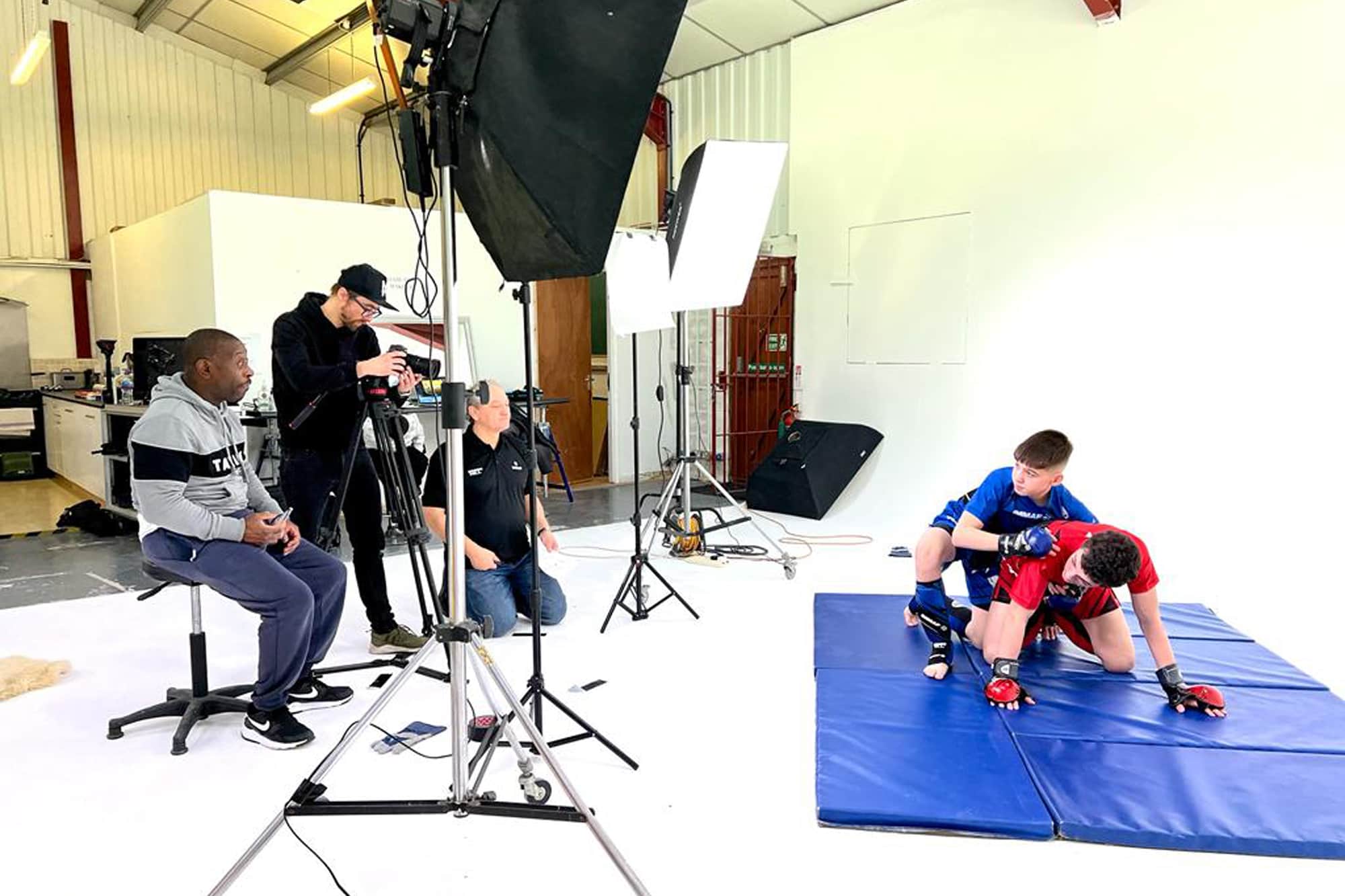Like any and every martial art – IMMAF has a technical progression scheme, which is a vital part of youth development. IMMAF Director of Development Andrew Moshanov works closely with this and provided some information surrounding grading in Mixed Martial Arts.
So, what is the progression scheme? In brief – all techniques and skills of the sport are presented in the order of increasing complexity, physical demands and technical restrictions for certain age bands while competing.
How many techniques are in the scheme? Currently, there are 230 techniques in the scheme [syllabus] covering all major aspects of MMA. There are ten blocks of technical competence – striking attacks, striking defences, kicks, kicks defence, fence control, fence escapes, takedowns, submissions, submission defences, groundwork reversals
What is “grading”? A certified coach shall “grade” his student by evaluating his/her ability to demonstrate and explain particular techniques. This is commonly conducted as a “grading exam, or display” in front of peers and/or parents.
What are the criteria for grading? Most of the evaluation criteria are biomechanical, the student is supposed to demonstrate a sound understanding of force application, confidently display correct mechanics, and present good movement literacy. At the senior grades, he/she is expected to demonstrate good fluency in the form of live drills, mimicking the real contest with a cooperative partner. All IMMAF certified coaches are trained how to run such evaluation, i.e. conduct “grading”.
How many grades are there in the IMMAF scheme? There are six major grades or belts for the youth – yellow, orange, green, blue, purple, brown, with six mid-grades, allowing students to learn the game and advance in the smaller steps. There is a black belt on the top of this “competency pyramid” but a person can be promoted to black belt only after 18+. Promotion criteria will be released soon, subject to final approval from Coaching commissions and IMMAF Board.
How soon can one get his next grade? There is a minimum time in each grade – 1 year, so an adult beginner should be able to progress from the yellow to brown belt within 5-6 years. This time frame is very common across most martial arts. However, this does not mean that an early start in MMA can help to obtain the black belt earlier. We believe that the speedy promotion of premature students to the black belt has detrimental effects and jeopardises the whole philosophy of martial arts and its culture of martial arts. The IMMAF app will also allow students to access their learning from home, meaning they can practice even when not attending a gym. This e-learning platform will allow them to continue their training, whilst having a dialogue with their coaches via the app.
My child (age 6) wants to start MMA, is it too early? No, it is never too early when it comes to the physical development of a child. Your child will enjoy the sport only if his progress is noticed, appreciated, and rewarded. Please, notice that we do not speak about “fighting” here, which may be wrongfully associated with the nature of this and any combat sport. We mean general development first. Young children, who join MMA youth programs as early as the age of 6-7, will go through more interim grades – this is the project we currently develop in collaboration with our partners UFC GYM LLC. One may say this makes the process of promotion to the next grade longer, however, this allows a coach to address gaps in the general development of the young athletes and level them up in the class, hence tackling/ minimising the biggest coaching challenge – “teaching the mixed abilities class”.
Who is the examiner? An IMMAF certified coach can act as an examiner for his students. Important to note: a coach himself needs to have a minimum grade of Blue +. However, it may depend on the national federation, the vision of their national technical committee and their internal policy.
Why grading at all? We know that 95% of all club members are recreational, and only approx. 5% are competitive. Grading is a great tool, an excellent motivation for recreational athletes to continue practising mixed martial arts. This is the only form of recognition of their progress in the sport if fighting is not their cup of tea.
Why grade competitive youth athletes? There are two considerations. Firstly, it is safe. Youth sports safety is based on the three pillars – no mismatch in weight, age and technical experience. Therefore, we have weight categories, age bands and now technical competence. Some coaches may say – an athlete can get technical competence by participating in a few events. True. But the scale of events is different from country to country. Therefore, we decided to police the mismatch in the technical competence of the athletes by checking their minimum technical standard and not the number of fights they may have experienced.
Secondly, recreational and competitive athletes practice together in the same clubs. Competitive athletes are role models for the recreational pool. They are leading the way. We believe that this can reinforce the club structure and national federations. Grading will be compulsory for both groups of youth – recreational and competitive.
Andrew Moshanov added:
“Please, note that a grade is not proof of fighting ability of a student, but an effective means of retaining students in the clubs. First and utmost, it’s a recognition of their effort and commitment and willingness to learn the sport. The more we retain and prevent from dropping out of the sport – the stronger MMA clubs will be, the bigger the IMMAF fan base, the healthier the next generation. There is no alternative for grading, it is one of the most important building blocks of efficient national federation and sustainability of its clubs.”
A minimum technical standard is applied to the 2022 Youth Worlds. National Federations who still do not have IMMAF certified coaches, please, asap contact info@immaf.org / andrew.moshanov@immaf.org.

